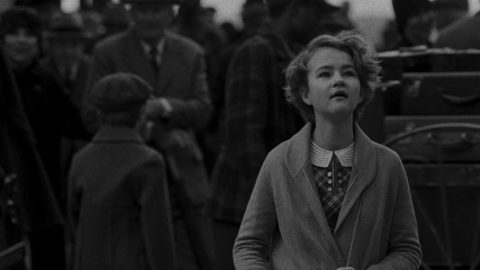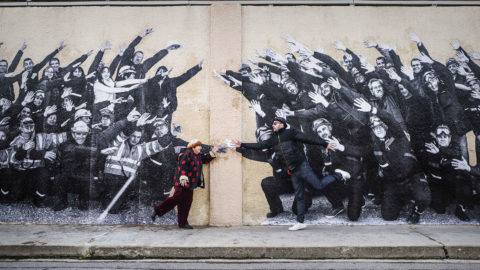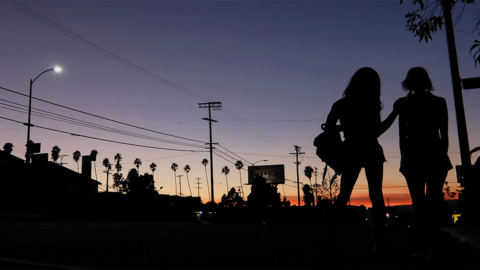By Cassie da Costa in the September-October 2017 Issue
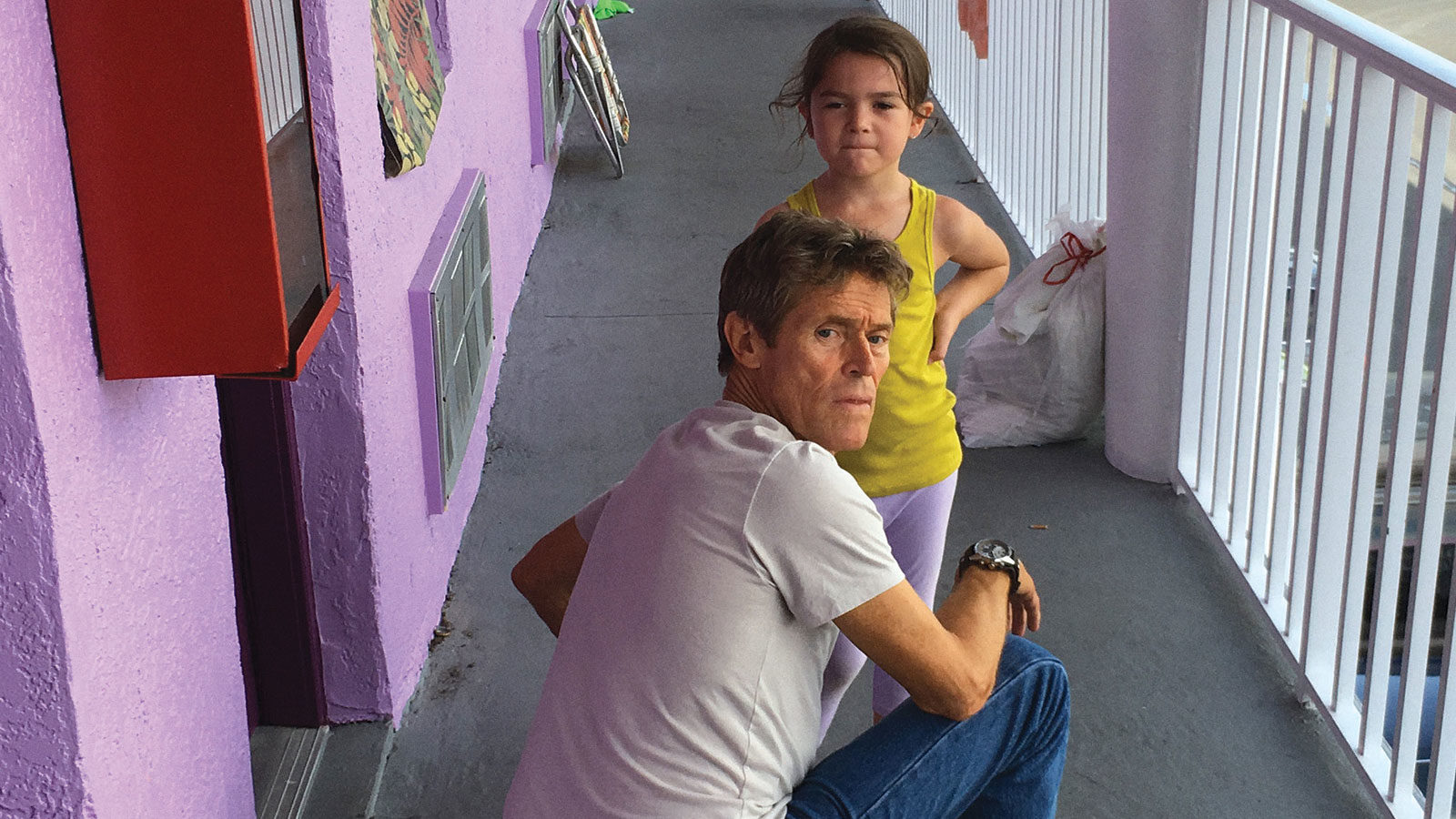
Review: The Florida Project
(Director: Sean Baker, Country/Distributor: USA, A24, Opening: October 6)
Sean Baker directs fiction films like a documentarian hesitant to work within a journalistic framework, often casting nonprofessional actors in roles that draw upon marginalized experience. Most recently Starlet, about a young white blonde California girl and porn actress who forms an unlikely friendship with a grieving old woman, and Tangerine, which follows two black trans women as they hunt down a boyfriend’s new cis white girlfriend, garnered attention from critics enthralled with their stylistic savvy.

From the September-October 2017 Issue
Also in this issue
The Florida Project focuses on a mother, Halley (Bria Vinaite), likely in her early twenties, and her daughter, Moonee (Brooklynn Prince), who’s 6 years old. The two live together in a single room at a bright lavender motel in Orlando near Disney World. Moonee spends the summer running around with her friends: Scooty, who lives directly below in an identical room with his young mother, Ashley; and Jancey, who’s from another motel down the road. Moonee and Scooty befriend Jancey after they’re caught spitting on her grandma Stacy’s car. Later, at the behest of the motel manager, Bobby (played by an anxious, assertive, and nurturing Willem Dafoe), the kids return with Halley to clean up, enlisting Jancey’s help to the ire of her grandma. Halley—who grins wide, sports dyed hair and tattoos, and speaks in a noncommittal, alternately disdainful and amused drawl—tells Stacy to lighten up, they’re kids! Stacy, lacking the energy to continue caring, agrees, and the little ones continue their wild adventures.
But, of course, life at the motel isn’t a simple tale of pre-adolescent crassness, pastel walls, and whimsy. Baker hones in on the precarious daily lives of these poor families, who live in close proximity to affluent tourists on indulgent, wholesome vacations. Halley skillfully alternates between chilling and hustling, and enlists Moonee as an accomplice in selling marked- up wholesale perfume in front of a fancy hotel. Later, she must resort to riskier measures to make rent. Yet we never get any particular sense of who Moonee and Halley are as individuals beyond their predicament and pluck, and why they are at the center of the movie, instead of, for instance, Scooty and Ashley, or Jancey and Stacy, or Bobby and the young delivery man named Jack who seems to be his son. It seems that all of these characters are on screen because they’re interesting—they have unpredictable, confrontational personalities, and live in a rarely depicted, insular community where their eccentricities interweave and conflict—but not because Baker has genuine emotional insight on them or their circumstances. In a cameo that encapsulates the film’s facile mix of swagger and kitsch, New York “Naked Cowgirl” street performer Sandy Kane appears as a resident who insists on sunbathing topless.
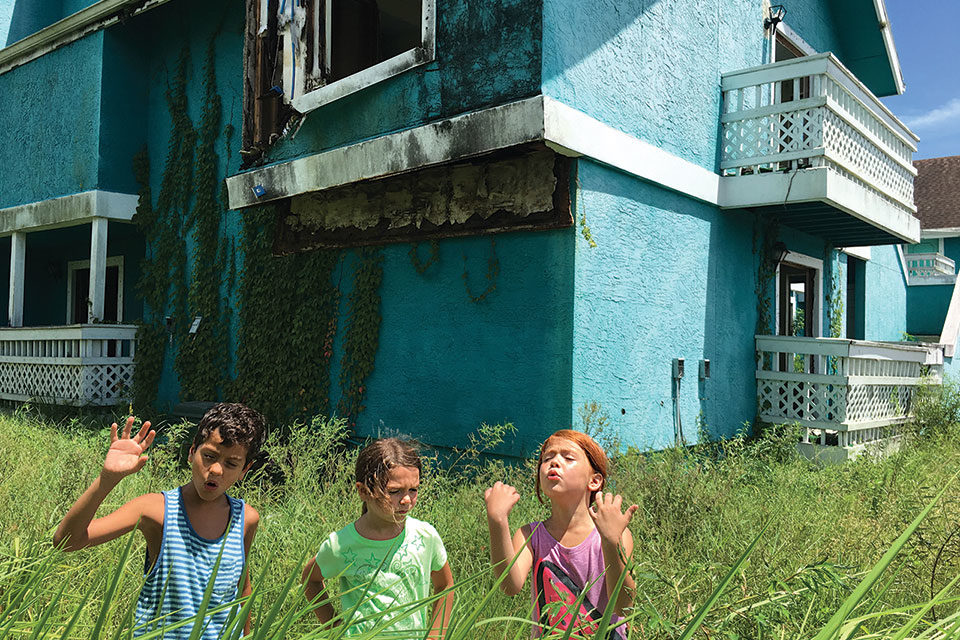
Of course, Baker isn’t a poor child, a black trans woman, or an uptalking porn actress. He’s a young, college-educated white male film director, and likely wary of over-identifying with his subjects or assuming too much about them. But rather than create space for them to flourish, the level of distance he imposes between his directorial perspective and his characters’ psychology leaves them with a kind of emptiness. Scenes of bonding between Halley and Moonee, in which they dance together on a lawn with the sun flickering on their faces, are constructed as ecstatic or madcap interludes and rarely register as meaningfully expressive moments. The audience is invited to believe that their lives are devoid of thoughts and motivations beyond hustle and pleasure, and so the movie ends up feeling like a millennial Instagram feed: cute, edgy, explosive, pithy, but shallow.
Halley and Moonee’s unruly energy is presented as an end in itself, as if it is enough to know that they exist and are trying to survive, but not what that survival means to them or what they hope for themselves outside of it. It’s a creative misstep prevalent in the past few years as more—usually white—artists attempt to reckon directly with questions of race and class: Baker crudely renders his marginalized subjects because while he can imagine their daily realities he cannot fully fathom their inner lives. Jacques Audiard makes this mistake in Rust and Bone, Andrea Arnold in American Honey, and John Lee Hancock in The Blind Side.
The episodic nature of Baker’s film suggests that the world the characters inhabit is fast and fleeting, unsentimental but teeming with unprocessed emotions. This picture rings true, but even where environments are unstable, people do emerge as themselves, one way or another. In their 2014 film Heaven Knows What, Josh and Benny Safdie deliver on this duality, finding inspiration in the complexity of their subjects. But as The Florida Project crashes into its haphazard end, you’re left wanting more. Not more events, but more of the characters—their experiences of the world as people with thoughts, feelings, and idiosyncrasies that aren’t only reactive to or symptomatic of their circumstances, but compelling expressions of themselves.
Cassie da Costa is an editorial assistant and video producer at The New Yorker.




